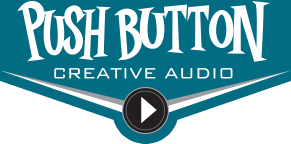
Some of the best jingles are timeless. Who can honestly say that they don’t know the song in the Oscar Meyer Weiner commercial or the McDonald’s Big Mac tune off the top of their head? Odds are, most people can, even if they’re too young to remember when those commercials were live on the air. Having multiple generations humming a tune, even decades down the road, is the sign of the perfect jingle.
So, what goes into a jingle? What makes those two examples so timeless? As it turns out, there are several characteristics that the best, most unforgettable jingles have in common. What are they? Both music and words, of course, but there’s a bit more to it than that. Let’s explore the ingredients of the perfect catchy tune together.
Creating a Catchy Tune
Obviously, a jingle needs to have music or some sort of tune (humming, clapping, something to keep the time) in order to be complete. When it comes to putting together the music, there are a few elements that make jingles memorable, including:
- Repetition in the Notes – There is sweetness is simplicity. The best jingles aren’t complex. They don’t use every note available, but instead, they stick to between two and four notes that are commonly used throughout music in general. This simplicity makes them easy to hum and sing, as well as remember.
- Time Signatures – A time signature is the count that the music moves to. Without it, the sounds would seem chaotic, and there would be no way to tell how many notes should be played in each bar. Basically, the time signature tells the musicians when to play and how fast to do so. The most common time signatures are 2/2, 2/4, and 4/4, which are highlighted in some of the best jingles.
- Tone and Type of Music – Have you ever noticed that memorable jingles tend to be a bit upbeat, while at the same time, they reflect the products? You’d never hear a jaunty tune selling health insurance to elders or a happy song advertising a nursing home. Instead, those products need to have jingles that match what they’re selling. The catchiest songs, which are remembered for years, tend to be cheerful or upbeat and sell products that make people happy.
Putting Words to the Music
Jingles require more than just music; they also need words. In fact, the words, in most cases, tend to be more memorable than the tune itself. This is due to a number of tricks that jingle writers use in order to produce words that not only express what the product does, but also are designed to be catchy. Here are some of the techniques that they use:
- Use Rhymes – We are trained to love rhymes from an early age. So, it makes sense that rhyming words appear in many full-length songs, not just jingles. Lyrics that rhyme are simple to put together and easy to remember because the words tend to mimic each other on the ends of each line. With that said, simplistic rhymes are the best because they don’t require the listener to do a lot of work when singing it back.
- Consider Alliteration – Alliteration is not just fun to say, it also refers to strings of words that are fun to say. This term refers to words written in a row that all start with the same letter. “Peter piper picks a peck of pickled peppers” is an example of alliteration at its finest. When you choose to use it in your jingle, you’re creating some fun wordplay that makes the song that much easier to remember.
- Don’t Forget About Onomatopoeia – Even if you aren’t familiar with the term, you’ve no doubt heard jingles that use onomatopoeia. This is a grammatical term for words that mimic a sound, like “buzz,” “bang,” “swoosh,” and “vroom.” You’ll see them used in comic books, written down so that you know that the hero and the villain are fighting. However, these words can also be used in jingles, and when done so correctly, they add a big bang of life to the tune, exciting the listener and keeping them engaged.
- Simple and Memorable – In addition to everything above, although the use of rhyming, alliteration, and onomatopoeia may sound otherwise, the perfect jingle has words that are simple, relatable, and memorable. You can use all of these literary tricks, while at the same time, putting together a string of words that describes the product and what it does in a manner that isn’t overly complicated. How? Most jingle writers stick to words that have only one or two syllables – simple, short, and sweet is the key!
Creating a Jingle
Putting all of these elements together can help you create a catchy jingle for your own brand, or in this case, a famous one. For example, DSW shoe stores, which sell discounted footwear, don’t currently have a jingle of their own. Coupled with the right tune, here’s a simple and catchy jingle that could possible work for this already well-known brand:
“I love discounts. Don’t you too? Buy shoes on sale at DSW.”
The Perfect Jingle
One thing to keep in mind while trying to write a good jingle is to, well, not focus too hard on writing something memorable. You don’t want to ramp up the pressure or you may begin to second-guess yourself and find yourself with a bout of writer’s block. Plus, if you do manage to crank out a jingle under stressful circumstances, it simply won’t feel right. Instead, just relax and let the creativity flow, while keeping in mind all of the things that make the product great and a jingle memorable.







